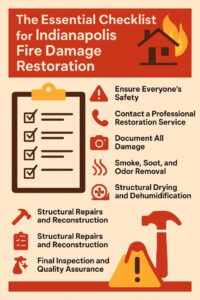The evolving landscape of nursing education has necessitated adaptive and flexible learning pathways that support diverse learner needs. Among these innovations, FPX Assessments have emerged as a key component of Capella University’s FlexPath learning model. Designed to replace traditional exams, these assessments emphasize applied knowledge, critical thinking, and real-world problem-solving. Unlike standardized testing, FPX Assessments evaluate students through competency-based methods, aligning academic expectations with professional demands. This shift represents a significant transformation in how nursing students demonstrate their proficiency, fostering a personalized academic journey that mirrors actual clinical environments.
The Framework of FlexPath Learning
FlexPath assessments function within a broader framework that emphasizes self-paced learning. In this model, students progress through coursework by completing assessments that prove mastery of specific competencies. Rather than attending scheduled classes or sitting for proctored exams, students work independently and submit assignments or projects that align with real-life nursing practices. The FlexPath structure supports adult learners, particularly those balancing careers, families, and education. By offering autonomy over scheduling and progression, it caters to various learning paces and life circumstances, enhancing accessibility to academic advancement in nursing.
Assessment Design and Evaluation Criteria
FlexPath assessments are structured to reflect practical nursing competencies. These include critical areas such as care coordination, patient safety, interprofessional collaboration, evidence-based practice, and health policy analysis. Each assessment typically involves a real-world scenario requiring analytical thinking, integration of academic knowledge, and solution-oriented responses. Rubrics guide the evaluation process, outlining performance indicators across different levels of mastery. Feedback is detailed and formative, offering students the opportunity to revise and resubmit until the expectations are fully met, encouraging continuous improvement and deeper learning.
Advantages of the Competency-Based Model
The FlexPath model’s emphasis on competency over seat time benefits students by aligning education with workplace readiness. Instead of memorizing facts for tests, students must demonstrate their ability to apply concepts effectively. This approach nurtures critical thinking, decision-making, and problem-solving—skills essential for modern nursing. Moreover, the model supports self-reflection and iterative learning, as students refine their work based on constructive feedback. This process fosters resilience and professional accountability, preparing students to navigate the complexities of healthcare environments.
Addressing Challenges and Criticisms
While FlexPath assessments offer clear benefits, they are not without challenges. Some students may struggle with time management or feel overwhelmed by the responsibility of directing their own learning. Additionally, the absence of peer interaction or live instruction may limit collaborative learning opportunities. Instructors play a pivotal role in mitigating these issues by providing timely feedback and maintaining communication. Institutions must also ensure students are adequately oriented to the model to promote successful outcomes. Technical literacy, academic writing skills, and access to support services are essential for success within this system.
The Role of FlexPath in Curriculum Development
FlexPath assessments shape curriculum design by focusing on measurable learning outcomes. Programs built around this model integrate assessments early in the instructional planning process, ensuring that each assignment aligns directly with course objectives. This backward design approach promotes coherence and clarity in educational delivery. Furthermore, it enables faculty to track student progress systematically, identifying learning gaps and tailoring support accordingly. In nursing programs, this method ensures that graduates meet industry standards while engaging with course material in a meaningful and relevant manner.
Academic Integrity and Originality
Maintaining academic integrity within the FlexPath model is crucial, especially given the independent nature of the work. Institutions employ plagiarism detection software and emphasize ethical scholarship through clear guidelines. Students are encouraged to develop original responses grounded in research, critical analysis, and personal reflection. This reinforces a culture of honesty and professional ethics, both of which are foundational to nursing practice. The model’s requirement for customized, scenario-based responses inherently discourages rote copying, fostering authenticity in submissions.
Midpoint Evaluation
One notable example of a core FlexPath assessment is the nurs fpx 4005 assessment 3. This assignment typically emphasizes patient-centered care and quality improvement strategies within a clinical context. Students are expected to assess complex patient cases, develop nursing interventions, and justify their decisions using scholarly evidence. The assessment not only measures understanding of healthcare principles but also requires synthesis of interprofessional collaboration and ethical decision-making. Through this type of evaluation, students refine both academic knowledge and clinical reasoning, bridging the gap between theory and practice.
Application Beyond the Classroom
FlexPath assessments prepare students for real-world applications by simulating clinical challenges. In traditional education, assessments often fail to replicate the pressures and nuances of healthcare environments. FlexPath assignments, however, demand reflective practice and solution-based thinking. This equips learners to transition smoothly into professional roles where adaptability, accountability, and critical thinking are essential. Employers benefit from graduates who have honed these competencies through rigorous, realistic academic exercises. Furthermore, students gain confidence in their ability to manage complex care scenarios and lead with competence.
After-Middle Focus
Another illustrative assignment is nurs fpx 4045 assessment 4, which usually centers around ethical dilemmas, healthcare policies, or patient advocacy. This type of assessment challenges students to critically evaluate systems-level issues in healthcare and propose strategic solutions. The objective is not only to analyze current frameworks but also to identify areas for improvement and innovation. Assignments like these require synthesis of multidisciplinary knowledge, drawing from law, public health, and ethics. This complexity strengthens students’ leadership potential and policy literacy, both vital for advanced nursing roles.
Feedback and Iteration: Keys to Improvement
Feedback in the FlexPath model serves a dual function: it evaluates current performance and guides future improvement. Detailed evaluator comments help students identify strengths and areas for growth. The opportunity to revise and resubmit assessments allows learners to engage deeply with content and refine their work over time. This iterative process promotes mastery rather than surface-level completion. It also mirrors clinical practice, where healthcare professionals must constantly reassess and adjust care plans based on patient outcomes. In this way, FlexPath encourages lifelong learning behaviors essential to the nursing profession.
Preparing for Professional Licensure and Practice
Although FlexPath assessments do not directly prepare students for licensure exams, they do foster the competencies needed for professional success. The emphasis on critical thinking, patient safety, ethical judgment, and communication mirrors the standards upheld by accrediting bodies and licensing boards. In preparing written assignments that simulate clinical tasks, students gain confidence in their ability to document care, collaborate with colleagues, and advocate for patients. These skills translate directly into workplace readiness, enhancing graduates’ ability to meet employer expectations and deliver quality care.
Supporting Diverse Learners
FlexPath supports inclusivity by accommodating a wide range of learning styles, life experiences, and professional backgrounds. Nontraditional students—such as working nurses, parents, or military personnel—benefit from the flexibility and autonomy the model offers. Assessments can be completed at a pace that suits individual schedules, reducing barriers to participation. Moreover, the variety of assignment types, from case studies to policy critiques, ensures that students can engage with material in a way that resonates with their personal and professional goals.
Institutional Responsibilities
While FlexPath provides many advantages, institutions bear the responsibility of ensuring quality and accountability. Faculty training, curriculum alignment, and student support services are critical components. Schools must monitor assessment outcomes, student satisfaction, and graduation rates to maintain program integrity. Regular reviews and updates ensure that assessments remain relevant to current clinical standards and technological advancements. Through intentional design and ongoing evaluation, institutions can uphold academic rigor while supporting flexible pathways to success.
Conclusion
To illustrate the model’s integrative nature, the nurs fpx 4035 assessment 2 offers a final example. This assignment typically requires students to assess quality improvement initiatives within healthcare settings. It blends research analysis with applied recommendations, drawing on interdisciplinary knowledge. As a capstone-style task, it encapsulates the goals of the FlexPath model: to produce nurses who are not only knowledgeable but also reflective, innovative, and capable of initiating meaningful change. By mastering such assessments, students demonstrate readiness for both professional practice and ongoing academic achievement.
For more info:
Evolving Landscape of Nursing Practice: Education, Challenges, and Assessment
Understanding the Structure and Purpose of FlexPath Assessment









